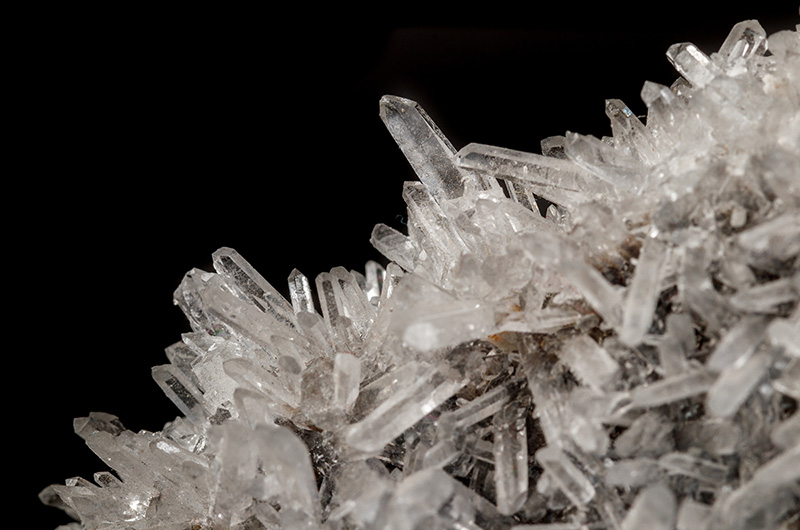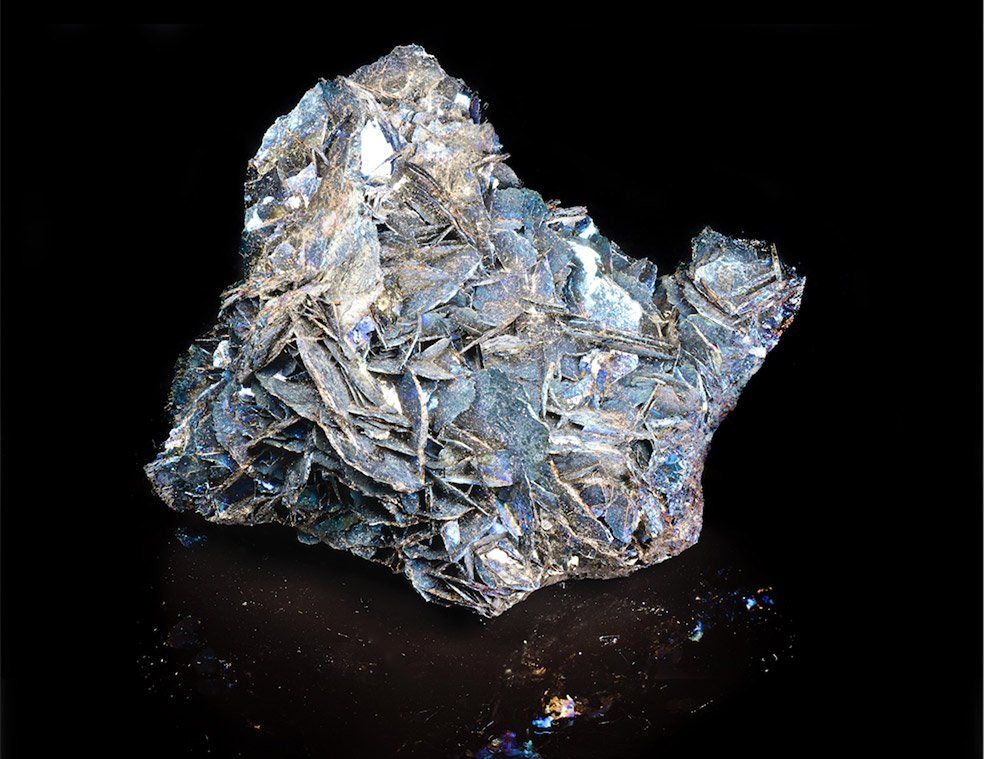
Definition of a mineral
What is a mineral? Still today, the term is debated. The most commonly accepted definition is that of the IMA (International Mineralogical Association), an international body deciding what may or may not be considered as a mineral: “Minerals are natural, homogeneous and crystalline solids, constituting rocks, characterized by a defined chemical composition and a particular crystallographic structure”.1
The definition of a mineral has constantly evolved over time. During antiquity and the Middle Ages, it is the criterion of the deformation of matter that prevails: the divisible materials under the hammer, such as calcite for example, are distinguished from those that are malleable, such as gold.2
In 1546, Agricola wrote De natura fossilium, considered as the first mineralogy treaty. It establishes a method of identification that is based on various immediate properties of minerals such as color, shine, hardness, density… but also the taste or the smell!3 At the end of the 18th century, the abbot René Just Haüy and his disciples reworked mineralogy from new nomenclatures. They define minerals according to criteria that take into account both their chemical composition and the geometry of their structure (crystalline systems). Modern mineralogy is born4.
Chemical composition and atomic structure
Defining a mineral requires to take into account two elements: its chemical composition and its atomic structure. Chemical composition refers to the atoms that make up a mineral. The atomic structure designates the way these atoms will organize inside it.
Taking these two characteristics of a mineral into account is essential. Indeed, different minerals may have the same chemical formula, but different atomic structures. Graphite and diamond, for example, are both made up of element C (carbon). However, in the structure of the diamond, a carbon atom is connected to four others, forming a compact network, while in the structure of the graphite, a carbon atom has only three neighbors, forming a hexagonal network resembling a honeycomb. This structure of the minerals at atomic scale determines their macroscopic properties: the diamond is considered as the hardest mineral on Earth whereas the graphite, friable, leaves a black trace if pressed on paper.5
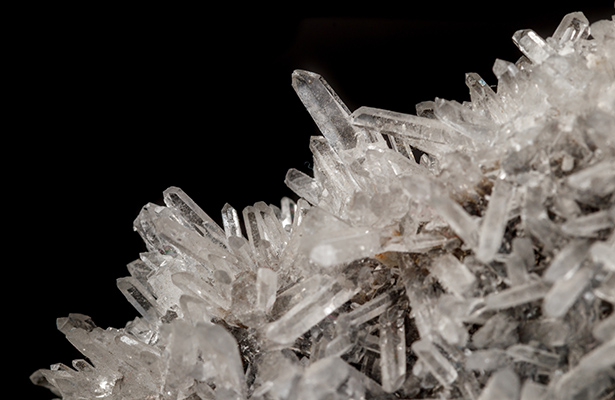
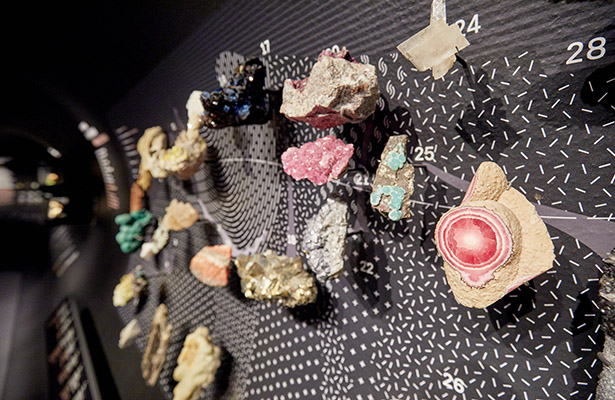
A wide variety of minerals
Some experts believe that only crystallized and inorganic solids, formed by a geological process, can be considered as minerals. For example, this strict definition can be applied to quartz or feldspar, which consist of constant and stable atomic arrangements that repeat almost infinitely, forming crystals. In this case, however, how can we define elements such as mercury, which is found in liquid form, or amber, composed of organic elements?6
Native mercury would not be considered a mineral because it is liquid and, as such, not crystallized. Yet, the International Mineralogical Association considers native mercury to be a mineral7. Indeed, in this liquid, the mercury atoms are strongly bound, as is the case in a crystal (besides, the «liquid crystals» do exist in our screens!).
However, if for a crystal the arrangement of atoms is constant and stable, for mercury it varies constantly. A liquid is therefore not so different from a crystal: the two are organized differently, but from the same atomic and molecular structures. Amber, on the other hand, is not considered a mineral per se (as is coal or oil) because it is a fossilized resin, composed of a large number of different organic substances intimately mixed without defined chemical composition or ordered atomic structure8. Scientists call them “mineroids”9.
In fact, minerals of purely mineral origin are only a minority of the mineral world as we know it today. Indeed, many carbonate rocks such as limestones for example are largely of biological origin: they were formed by the remains of living organisms (debris of bones, shells, carapaces, but also plants) since their appearance on earth at least 3.5 billion years ago10. Laboratory-formed compounds are also not considered to be minerals (as they are not formed by a natural geological process) even though their chemical properties and structure may be identical to natural minerals11.
Mineralogy, a science in constant evolution
Even today, mineralogy is a science in constant evolution. To date, approximately 5,500 different mineral species have been identified by the International Mineralogy Association, and a dozen new species are discovered each year. How is it possible?
Most often, these are microscopic species confined to a very particular deposit, having experienced unique geological episodes explaining their rarity12. But the most important potential of new mineral species lies in the study of extraterrestrial minerals (meteorites, asteroids, other celestial bodies present in our system such as Mars or the Moon13), for which technical progress now allows more and more advanced studies.
A new field in the exploration of mineralogy has opened up very recently: nano-sized minerals (one nanometer equals one millionth of a millimeter), often little or not crystallized. These species are impossible to detect with traditional mineralogy instruments: their identification requires sophisticated instruments, such as synchrotron accelerators, which have only recently been developed. These minerals are still little known even if they can be abundant in our soils, such as «green rust» like Fougèrite (identified in 1996 in Brittany near the city of Fougères which gave it its name), which has finally proved to be an extremely common mineral in soils under our latitudes14.
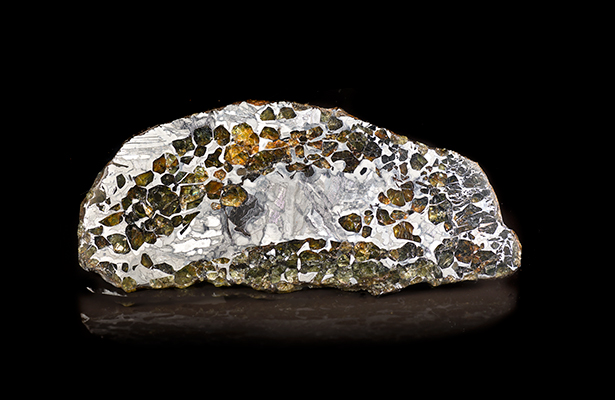
[1] www.ima-mineralogy.org/Mission.htm
[2] Q. Bollaert, A. Couturier, L. Lafontaine, H. Lestrelin, C. Loiseau, T. Malleville. Une santé de fer ! Minéraux et santé, de l’Antiquité à nos jours, Paris : Presses des Mines, 2021, p. 22 – 23.
[3] Idem.
[4] La galerie de Minéralogie et de Géologie, ouvrage collectif, Muséum national d’histoire naturelle, Paris, 2020, p. 57.
[5] Q. Bollaert, A. Couturier, L. Lafontaine, H. Lestrelin, C. Loiseau, T. Malleville. Une santé de fer ! Minéraux et santé, de l’Antiquité à nos jours, Paris : Presses des Mines, 2021, p. 22 – 23.
[6] F. Farges. À la découverte des minéraux et pierres précieuses – Minéraux et gemmes, sachez les reconnaître, Paris, Dunod, 2018, p. 9.
[7] Liste officielle des minéraux approuvés par l’IMA (mise à jour en janvier 2022) : http://cnmnc.main.jp/
[8] Sabina, Ann P.. « Minéral ». l’Encyclopédie Canadienne, 04 mars 2015, Historica Canada.
[9] F. Farges. À la découverte des minéraux et pierres précieuses – Minéraux et gemmes, sachez les reconnaître, Paris, Dunod, 2018, p. 11.
[10] F. Farges. À la découverte des minéraux et pierres précieuses – Minéraux et gemmes, sachez les reconnaître, Paris, Dunod, 2018, p. 9.
[11] Sabina, Ann P.. « Minéral ». l’Encyclopédie Canadienne, 04 mars 2015, Historica Canada.
[12] O. Tschauner et al. Discovery of davemaoïte, CaSiO3-perovskite, as a mineral from the lower mantle, Science (Vol. 374, n° 6569), pp. 891-894.
[13] J.J.Bellucci, A. A.Nemchin, M.Grange, K.L.Robinson, G.Collins, M.J.Whitehouse, J.F.Snape, M.D.Norman, D.A.Kring, Terrestrial-like zircon in a clast from an Apollo 14 breccia, Earth and Planetary Science Letters, Volume 510, 15 March 2019, Pages 173-185.
[14] F. Farges. À la découverte des minéraux et pierres précieuses – Minéraux et gemmes, sachez les reconnaître, Paris, Dunod, 2018, p. 14.
